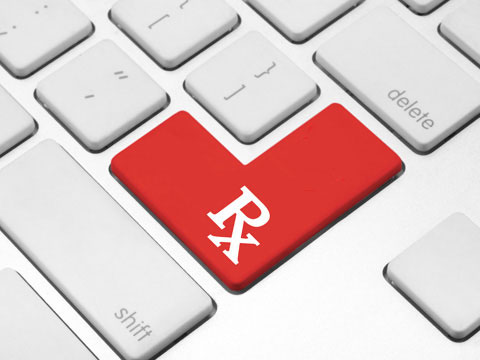eHI Explains EPCS
Interoperability, Policy, Value-Based Care
eHI Explains EPCS
October 2, 2018

EPCS Electronic Prescribing of Controlled Substances
What is e-prescribing?
E-prescribing (electronic prescribing) is a technological framework that allows medical practitioners to electronically write, then send prescriptions to a pharmacy. E-prescribing replaces handwritten prescription pads, faxes, and calling in prescriptions via phone. According to Surescripts data from their 2017 National Progress Report:
- 77% of ALL prescriptions are e-prescribed
- 90% of prescriptions for non-controlled substances are e-prescribed
- Only 21% of prescriptions for controlled substances (opioids, narcotics, etc.) are e-prescribed
Why is Electronic Prescribing of Controlled Substances (EPCS) important?
- EPCS allows for the security of electronic records, a reduction in fraud and abuse, and an improvement in patient safety
- EPCS positions pharmacies and providers to better share patient information by tracking the frequency, length of time, and dosages of patients using opioids
- The U.S. Drug Enforcement Administration (DEA) revised regulations to allow EPCS on a federal level in 2010. All states adopted the practice by 2015, but most did not have a mandate in place
Does EPCS help address prescription abuse? YES and New York is a model.
- In March 2016, EPCS was mandated for most doctors in the state of New York
- 97.8% of pharmacies are e-prescribing and 93.8% are EPCS enabled
- There was a 98% reduction in doctor shopping in the state
- There was a 70% reduction in prescription pad theft and loss
What are Prescription Drug Monitoring Programs (PDMPs) and why are they important?
- PDMPs are electronic databases that track controlled substance prescriptions in each state
- PDMPs can provide health authorities with real time information about prescribing and patient behaviors to facilitate nimble and targeted responses to the opioid crisis
What opioid legislations are pending as of 10/2/2018?
- H.R. 6, Substance Use-Disorder Prevention that Promotes Opioid Recovery and Treatment (SUPPORT) for Patients and Communities Act, draws on sixty-six bills that address opioid use prevention, recovery, and treatment and can affect electronic prescribing, prescription drug monitoring programs, and HIPAA laws, and include HR 5009, HR 3528, and HR 5801
- H.R. 6 sister legislation, S. 2680 The Opioid Crisis Response Act (OCRA)
- H.R. 5009. S581. Jesse’s Law requires drug addiction status to be added to all medical records
- H.R. 3528. Every Prescription Conveyed Securely Act requires all controlled substances prescribed by clinicians under Medicaid Part D to be electronically prescribed
- H.R. 5801. Providers Are Required To Note Experiences in Record Systems to Help In-need Patients (PARTNERSHIP) Act requires all states to establish prescription drug monitoring programs and healthcare providers to check the PDMP for the Medicaid patient’s prescription



